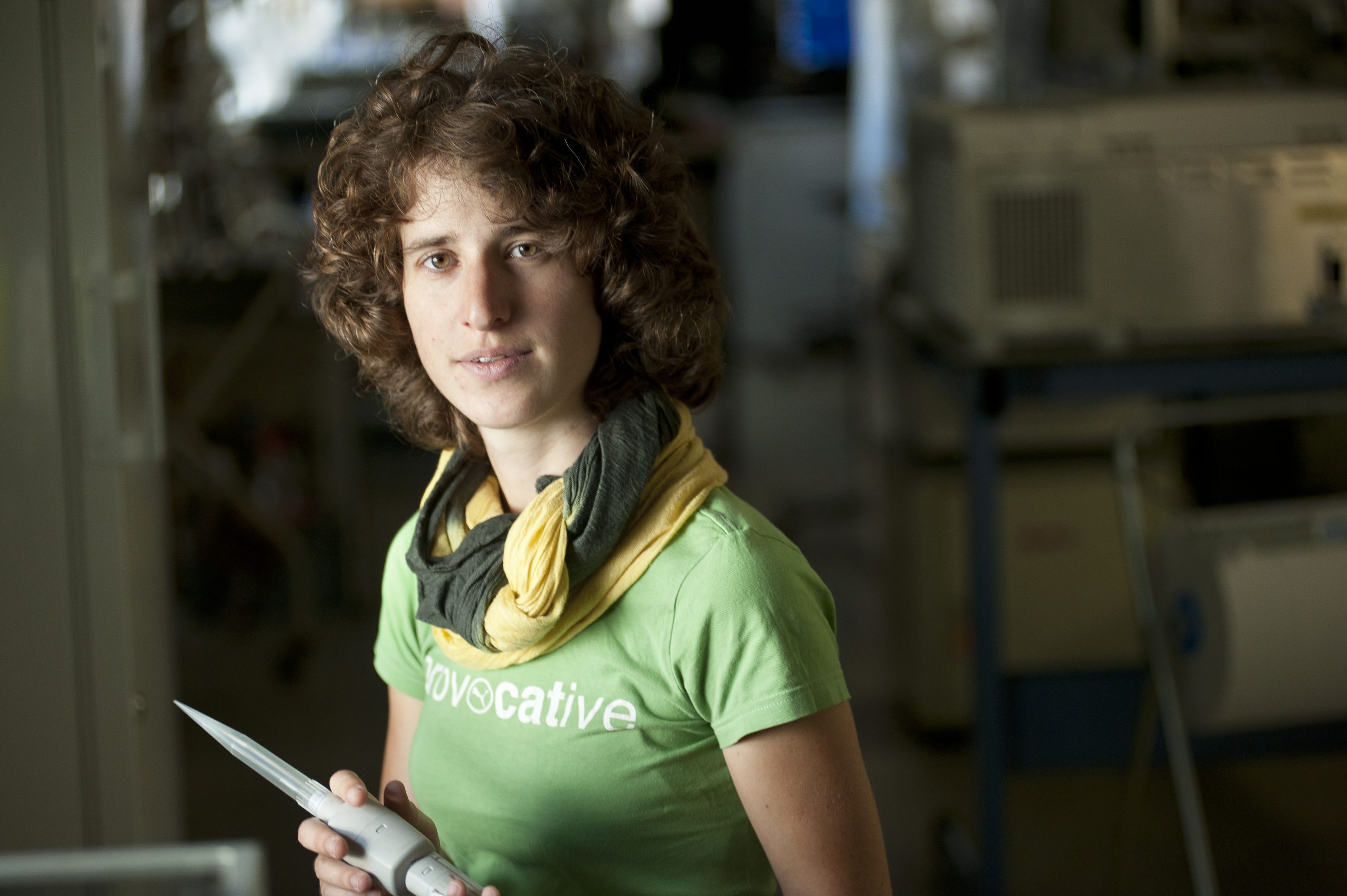Name
Ir. Annelies Aarts (28)
Nationality
Belgian
Supervisor
Prof.
Luuk Rietveld (Civil Engineering and GeoSciences)
Subject
Qualitative and quantitative analysis of public opinions and criteria for sustainable
bioproducts
Thesis defense
In two and a half years
“When there are heavy showers sewers sometimes overflow. The water smells and is polluted. At the moment there is already a solution for this problem: emptying the water in storage and sedimentation basins. But this takes up lots of space and is expensive.
I’m therefore looking into cheaper and new possibilities. I’m investigating whether a belt filter, which filters suspended solids and organic material out of the water, could be used. At certain treatment plants this is already used as the first step in the cleaning process of sewage water.
I’m working on a model that evaluates if the belt filter could be used at overflow locations of the sewer system. The model should also predict which settings are optimal during the filter operation. For example, I’d like to know how the filter behaves when different water quantities and qualities are used. And how does it react when the water is very polluted?
In order to answer these questions, I used a test facility in Eindhoven. I put sewer water through the belt filter, which measures 1.5 meters in height and length and is nearly 1 meter wide. I collected lots of data. It was dirty work: the water smells. I took the samples with me by car. One day I travelled by train, but that made me feel uncomfortable because of the smell.
I used the data to build a computer model that predicts how well the water is filtered. It took time to make the model work accurately. Models always simplify the real situation and assume parameters to be constant, which they are not in practice. You must decide if it is necessary to monitor the parameters and to make the model more complicated, or to determine if it works fine with an average value.
I’m writing a paper on this subject and will present my findings at a conference. I have faith in the fact that I can make my model work. Over the next two years I will keep working on this model and other models for wastewater treatment. Hopefully, I’ll also add research on monitoring the water quality and thus bring the models closer to a practical solution for (waste)water treatment.”



Comments are closed.